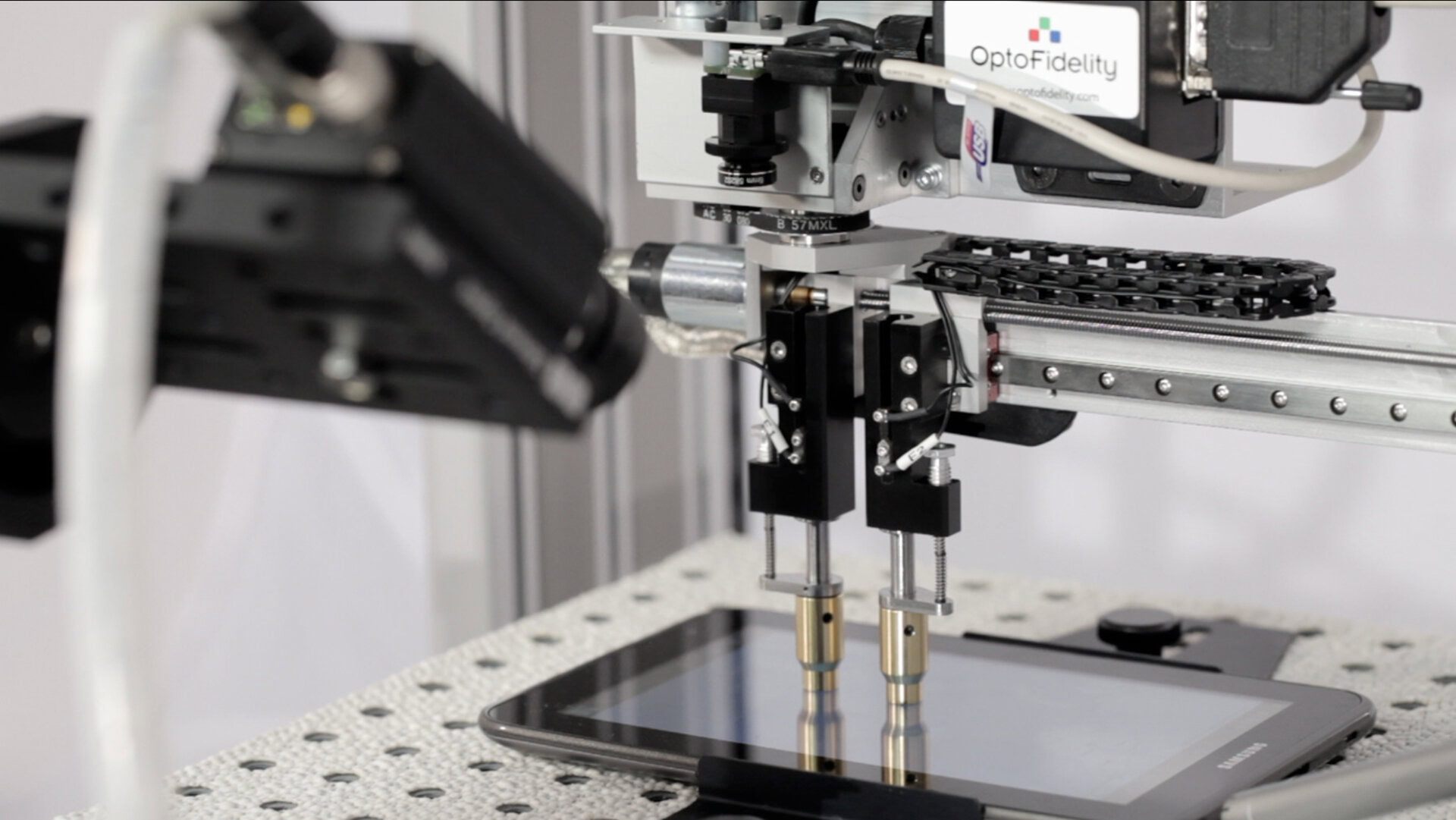Affiliate links on Android Authority may earn us a commission. Learn more.
Meet the robot testing your device for lag and the company that makes it


A mind-blowing amount of brilliant technology goes into each and every Android device, but very few of us really stop to contemplate just what it takes to design, build, and test a smartphone or tablet.
Now a post from Chrome evangelist Francois Beaufort sheds some light on UI testing and, specifically, on how the Chrome team uses a robot called TouchBot to measure responsiveness.
TouchBot emulates the interactions a human user might have with their device. In essence, it’s a mechanical finger, but unlike its biological counterparts, this finger never tires or slows down. Even more importantly, it can repeat the same precise movement thousands of times in a row.
The robot is manufactured by Finnish company OptoFidelity, which has been delivering interaction testing robots to the world’s top electronics manufacturers since 2005. In fact, there’s a good chance the smartphone you’re using right now has experienced the cold mechanical touch of an OptoFidelity robot. According to the company’s CEO, eight out of the top ten phone makers have bought OptoFidelity equipment over the past couple of years.
Back to the Chrome testing video, thanks to the magic of high-speed cameras, we can see the minute lag between the moment the “finger” touches the screen and the corresponding reaction. The smaller the number of milliseconds between the two events, the faster and more fluid the user experience feels.
Google is working hard to reduce this lag: in April, it said it would adopt Pointer Events to reduce the time needed for a touch to register, while in May, the Chrome team announced a new task scheduler that prioritizes rendering over background tasks in order to increase fluidity. When changes like these are tested, the TouchBot comes in very handy.
OptoFidelity’s machines can accomplish a variety of other tasks, from simulating the stress of repeatedly inserting a headphone plug into the audio jack, to testing out the durability of buttons and general software testing. More in the presentation video below.